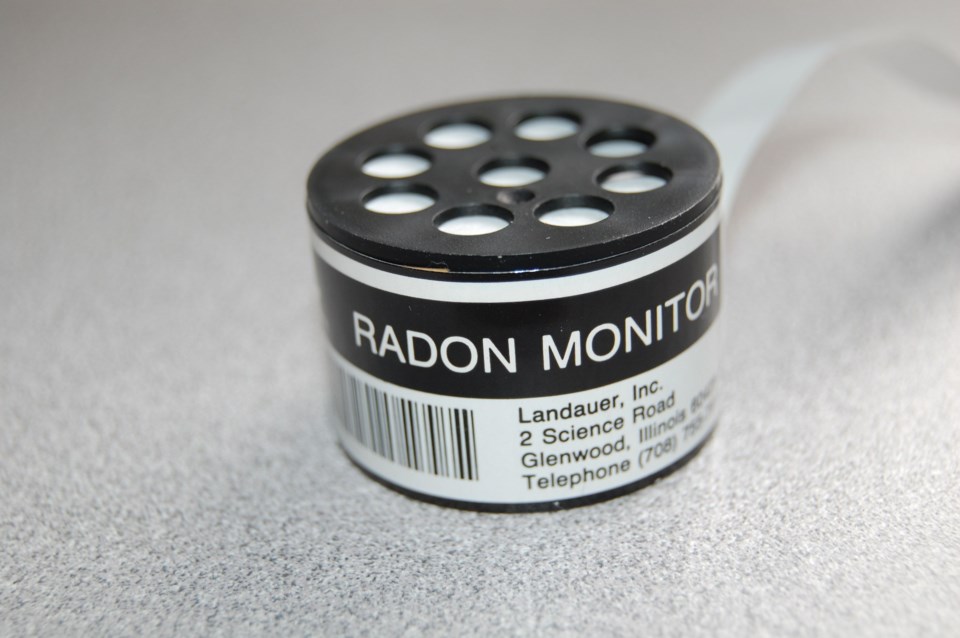Higher than acceptable levels of radon, a naturally-occurring element identified as the second-leading cause of lung cancer, have been detected in close to 30 per cent of Prince George homes that have been tested.
But only a small percentage of city homeowners have purchased the $30 kit needed to determine if their homes are at risk of contamination from radon, an odourless and colourless radioactive gas which seeps into basements from surrounding rocks and soil.
"We're finding about one in three homes, depending on the area, are coming up high, above 200 becquerels per cubic metre," said Kim Menounos, who leads the Healthy Community Environments Health Protection branch of the Northern Health Authority.
Scientists estimate radon causes close to 10 per cent of all lung cancers worldwide, second only to smoking. "It's even higher than secondhand smoke [as a cause of lung cancer]," Menounos said. "It's definitely a concern."
Dating back to May 2009, when the home-testing program began, Northern Health has sold 500 testing kits across the B.C. northern interior region, and more than 300 of them were to Prince George residents. But Menounos said a good percentage of those kits have not been returned for lab analysis.
The test takes a minimum of three months and up to a full year, and Menounos says now is the ideal time for testing. The radon levels tend to increase during cold-weather months when people are using furnaces to heat their homes, which results in negative air pressure conditions that can draw more air from the soil into the house.
"If you're only going to test for three months you should do it over the winter," said Menounos. "Every house has cracks in the basement floor and along the edge of the foundation so it can seep in and build up. There is no way to tell if it is there except to test for it. Homeowners need only test once unless they are conducting renovations in the basement or ground floor."
Radon, the heaviest known gas on earth, is an element formed as uranium decays. A BC Centre for Disease Control study identified elevated radon concentrations in several northern communities east of the Coast Mountain range, including Prince George, Quesnel, Fort St. John, Fort Nelson, Atlin and Kitwanga.
Even if high radon readings are detected, Menounos said the problem can easily be fixed.
The first step to remove it is to provide ventilation by opening windows and using ceiling fans. Open windows will reduce levels, but once the windows are closed the radon usually returns to previous levels within a day. Levels can also be reduced by forcing air into crawlspaces with a fan and or by blowing air into basements to pressurize rooms and prevent radon seepage. Homeowners should also seal cracks in basement walls and floors.
The most effective, permanent solution requires the expertise of a qualified contractor who will drill a hole through the basement floor to install a pipe that runs into the surrounding rocks and soil. A fan is then used vent the air under the concrete slab and away from the house.
"It's not something to be afraid of, you don't have to leave your home," Menounos said. "It's not something that would linger and it's no more expensive than replacing a furnace. People are worried their house value will drop if they find radon, but the U.S. [Environmental Protection Agency] has been working on radon for 30 years and they've never found that to be true."
Radon testing kits are available through Northern Health public health protection office off the fourth floor of the Native Friendship Centre, 1600 Third Ave. Call 250-565-2150 or e-mail [email protected]. More information is available at www.healthlinkbc.ca/kb/content/special/ty6131.html.



